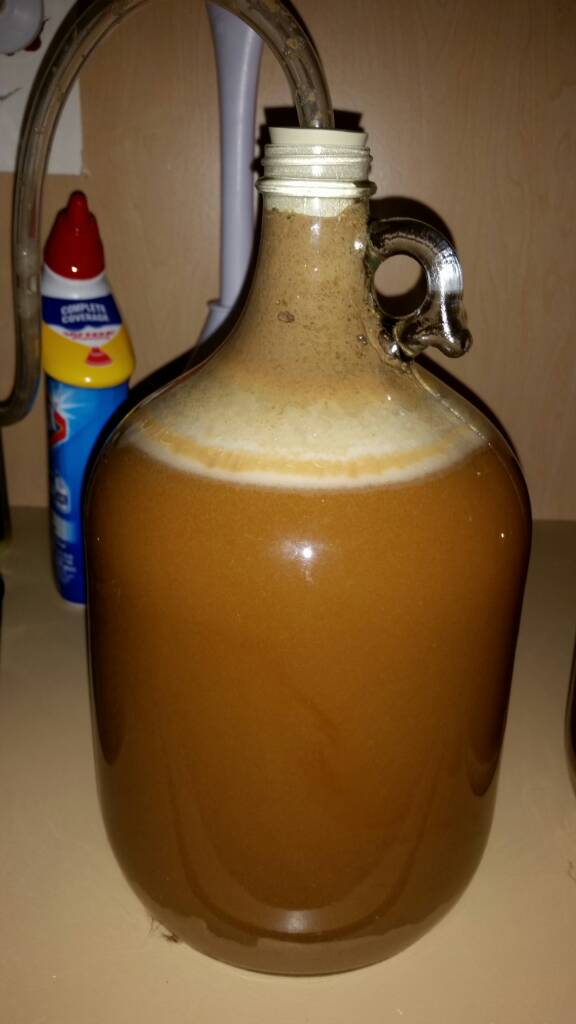So here's the background story... my girlfriend got me a brooklyn brew shop kit last Christmas that I just got around to brewing, a 1 gallon Warrior Double IPA, only they had forgotten to include the hops and yeast. So I drove to my local brewer store and bought some warrior hops and some lallemand bry-97 yeast.
The brew went fine and I pitched about half the packet of yeast, and went to bed.
The next morning, the beer was going nuts. Swirling and foaming and bubbling like crazy, but it continued to get more and more vigorous and by day two it looks like this (see attached picture). So much foam went through the blowoff tube that it accumulated to be about 400 mL (I know because my blowoff tube is resting in a measuring cup).
So my question is, what did I do wrong? Did I use the wrong kind of/too much yeast? Is my apartment temperature too high? (~75°) I know that it's indicative of a good active fermentation but I can't help but miss the almost-full beer that was lost through foam in the blowoff tube.
Please advise.
Thanks,
Ted

The brew went fine and I pitched about half the packet of yeast, and went to bed.
The next morning, the beer was going nuts. Swirling and foaming and bubbling like crazy, but it continued to get more and more vigorous and by day two it looks like this (see attached picture). So much foam went through the blowoff tube that it accumulated to be about 400 mL (I know because my blowoff tube is resting in a measuring cup).
So my question is, what did I do wrong? Did I use the wrong kind of/too much yeast? Is my apartment temperature too high? (~75°) I know that it's indicative of a good active fermentation but I can't help but miss the almost-full beer that was lost through foam in the blowoff tube.
Please advise.
Thanks,
Ted





















































![Craft A Brew - Safale S-04 Dry Yeast - Fermentis - English Ale Dry Yeast - For English and American Ales and Hard Apple Ciders - Ingredients for Home Brewing - Beer Making Supplies - [1 Pack]](https://m.media-amazon.com/images/I/41fVGNh6JfL._SL500_.jpg)



